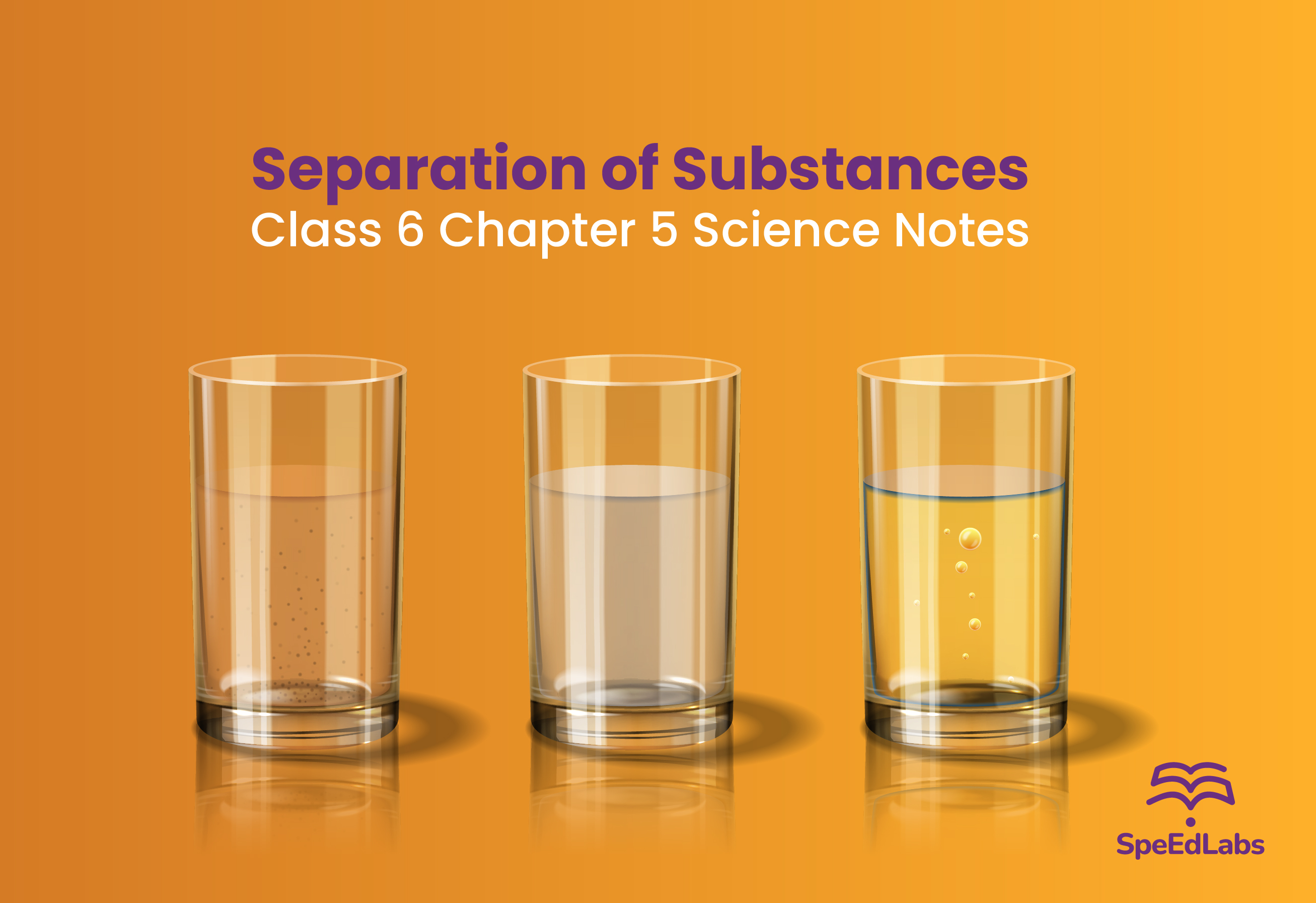Class 6 Science Chapter 5 Notes are now available online with SpeEdLabs to ensure complete exam preparation. We have compiled our standard notes in CBSE Science Class 6 on Separation of Substances by subject experts with years of experience. This Separation of Substances Class 6 Notes provides step-by-step chapter explanations along with short-cut techniques. Additionally, we offer revision materials for all subjects that are important for your upcoming exams, apart from Class 6 Science Chapter 5 Notes.
Separation of Substances Class 6 Chapter 5 Science Notes
In the past, we have all seen our parents and grandparents separate small stones from rice grains, pulses, filter tea leaves before serving them, and much more. Separation of substances is usually required in order to remove or separate the necessary substances from their mixtures. A substance can be classified into two categories: A mixture and a pure substance.
Mixture & Solution- What are these?
Mixture is a material that consists of two or more different substances mixed together but not chemically combined. It is a substance that has more than one component blended in any ratio. For example, air contains nitrogen, oxygen, carbon dioxide, dust particles, etc.
A Solution is a mixture of two or more components. Solvents have the highest concentrations, while solutes have the lowest concentrations. The solute in such a mixture is a substance dissolved in another substance, known as the solvent.
What is Separation?
The process of separating one or more components from a mixture is called separation. For example: distillation, sedimentation, and filtration.
Why do we need to separate substances?
- To obtain two different components
- To remove impurities or harmful components
- To group substances of different sizes
Methods of Separation
Separation of Solid from Other Solids:
- Handpicking- Handpicking is a method of separating large particles, such as dirt, stones, and husk, from wheat, rice, or pulses.
- Threshing- The process of threshing involves beating stalks to separate grains from harvested crops. The process is either done manually by farmers or with the help of threshing machines.
- Winnowing- In this method, heavier components and lighter components of a mixture are separated by blowing air or by blowing the wind. This is typically used for separating grains from their husks.
- Sieving- The sieving process involves passing a mixture through a filter or sieve to separate it. Usually, larger particles, such as impurities, do not pass through the filter, so they collect on the sieve. Finer particles pass through the sieve and can be collected below.
Separation of Insoluble Solids from Liquids:
-
Filtration
Filtration involves passing a mixture through a filter to remove solid particles from the fluid components.
For instance, when we pass muddy water through a fine filter, the mud gets filtered out and the water passes through.
-
Sedimentation
Sedimentation occurs when heavier components in a mixture settle out when water is added.
The purpose of this method is to separate grains from dust and soil.
-
Decantation
After sedimentation, decantation involves removing the water and impurities from the sediment.
Separation of Water Soluble Particles or Soluble in Solvent Solutes:
-
Evaporation
The process of turning water into its vapour is called evaporation. Whenever there is water present, evaporation takes place continuously.
-
Condensation
The process of conversion of water vapour into its liquid form due to contact with a cooler surface is called condensation.
Example: Formation of water droplets on a metallic lid, while boiling water.
Separation of Immiscible Liquids:
-
Funnel
In this process, the separation of an insoluble material from a liquid will be done by passing the mixture through a filtering apparatus.
It is used to separate oil and water mixtures.
-
Centrifugation
A centrifuge is used to spin liquid containing suspended particles at a high speed, causing heavier particles to settle down.
It’s used to separate milk from cream.
-
Churning
This approach is used to separate lighter solid particles suspended in a liquid.
Butter made from curd is an example.
Why Choose to Study from our Notes?
SpeEdLabs’s revision notes are a comprehensive study aid for students struggling with complex topics of the chapter. In order to help students build a solid foundation on chapter content, we offer online study material for all subjects.
We offer CBSE Class 6 Science Revision Notes on Separation of Substances curated by our subject experts for easy comprehension and short-cut techniques to decipher theories and properties of the chapter.
Discover the joy of learning with SpeEdLabs, where learning is fun and not a hassle.
Also Read –
- Food: Where does it come from? Class 6 Notes
- Components of Food: Class 6 Chapter 2 Science Notes
- Fibre to Fabric: Class 6 Chapter 3 Science Notes
- Sorting Materials into Groups Class 6 Chapter 4 Science Notes
- Changes Around Us: Class 6 Chapter 6 Science Notes
- Knowing our Numbers: Class 6 Chapter 1 Maths Notes
Also published on Medium.
